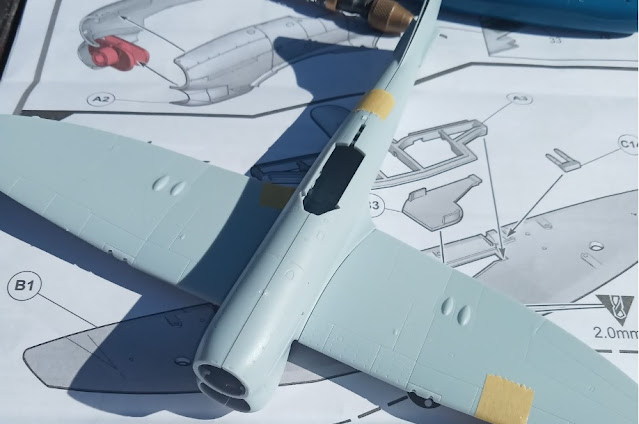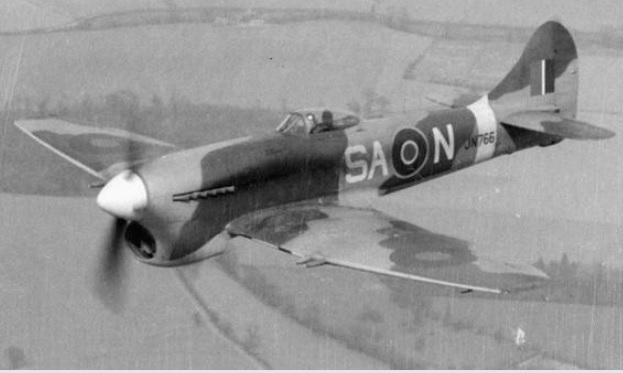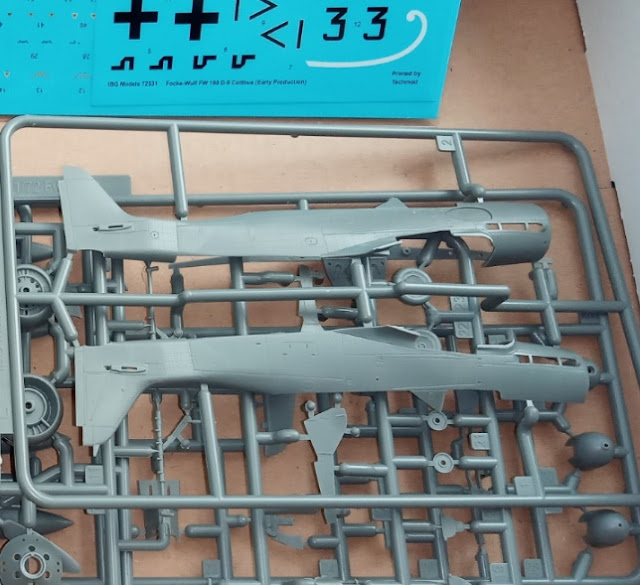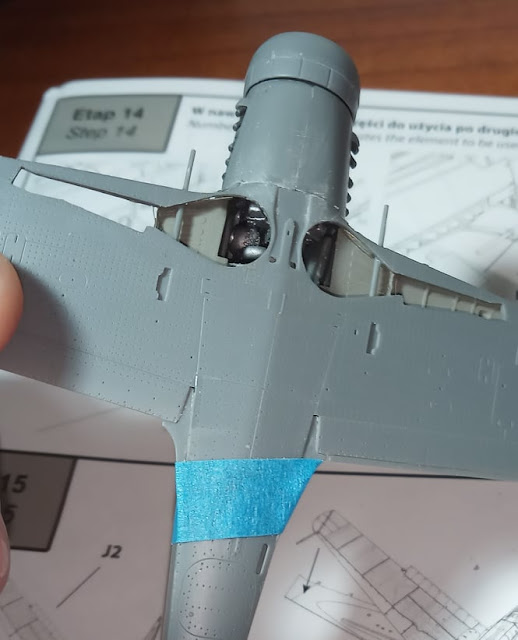Post-war TT 5 (target tug) version of the Tempest as seen at the RAF museum last weekend.
The following notes were compiled by Paul Bradley based on Chris Thomas' research which can be found on BM.
The Tempest V came in two basic 'versions' – Series 1, which is generally reckoned to be the first 100 or so airframes (JN729-773, JN792-822, JN854-877), and Series 2 that encompassed the remaining production of the type. However, within those two basic configurations there were some subtle differences that make it a difficult task to pin down the exact specs of a specific airframe at a specific time. Without going into great detail, here’s a quick summary of the features:
Long-barrelled cannon – Denoting the use of the Hispano Mk.II 20mm cannon, at least the first 39 Tempest Vs, up to JN767, had cannon fairings protruding from the wing leading edge.
Wing root blister – The first 50 Tempests, up to JN796, used Typhoon centre-sections. As the Tempest wing was thinner at the root, part of the steel tubing that made up this structure had to be covered by a small blister.
Below; first production Tempest V, showing all the salient features of a Series 1 Mk.V, test pilot Bill Humble at the controls. (Kate Humble's grandfather.)
Fishplates – These small structural strengtheners were found up to at least the 85th airframe, JN862.
Cuckoo door dust filters – Not required for Series 1 aircraft.
Main wheels – Early Tempests had Typhoon main wheel hubs with 5 spokes and Dunlop EX 11.25-12 tyres. Sometime in the JN-series, this changed to a new 4-spoke design, but the exact cut off is not known.
Under wing stores – long-range tank capability was not fitted until JN797, bomb carriage from 151st airframe and rocket projectiles from the 251st airframe.




























